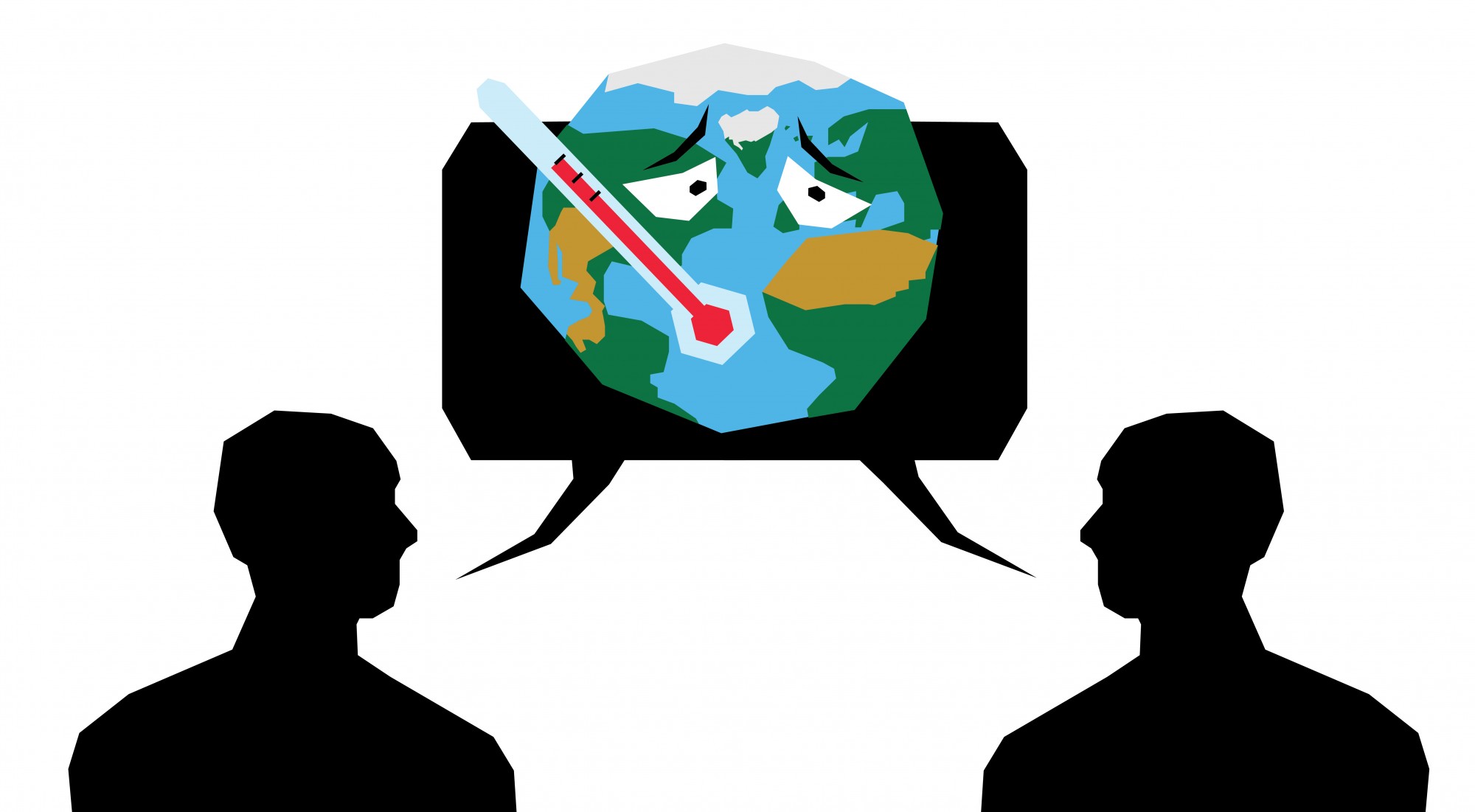For Kenneth Blumenfeld, climate change is more than just a conversation topic.
Blumenfeld, senior climatologist at the Minnesota Climatology Office, travels the state to engage with Minnesotans about the science of climate change.
“I think society has had this assumption that if you are trying to convince people of something, all you need are facts,” Blumenfeld said. “It’s much harder than just standing at a lecture and yelling facts to an audience, then hoping that … everyone goes home and changes their lightbulb.”
Scientists and educators at the University of Minnesota are finding ways to connect Minnesotans to the global conversation about climate change. This is part of an effort to explain its local impacts. University Extension, whose mission is to share research knowledge across the state, is trying to make climate change data more relatable.
According to a 2019 Yale University study on climate opinion across the United States, 66 percent of adults in Minnesota think global warming is happening. At the same time, 64 percent say they rarely or never discuss it as a topic.
The previous model of science communication focused on presenting facts as is with little context, said Joel Larson, an Extension leader at the University’s Water Resources Center.
“We can’t just get up there, present this information and expect people to understand,” Larson said. “We have to … contextualize to what they know.”
The majority of scientists do not receive any training in communication, which becomes a challenge when translating and presenting their research to the public, Blumenfeld said.
Part of the problem with talking about climate is localizing its large-scale impact, Larson said.
“It’s really hard to conceptualize what a two degrees Celsius increase actually means,” he said. “Two degrees may not feel like a whole lot if you’re sitting in a room and the temperature rises, but it has a tremendous, tremendous impact … on the global scale.”
Connecting to Minnesotans
Term-usage goes a long way in addressing the effects of a warming climate, said University Extension regional educator on soil and water quality Jodi DeJong-Hughes.
“I could talk about climate change and if I say that or global warming, it puts [farmers] on the defense — they quit listening,” Dejong-Hughes said.
She said breaking it down in terms of money saved helps many understand why their choices are important.
“We show you can [farm] with two thirds of [fertilizer] and still get the same yield, and it saves you money,” she said.
Associate Dean of Extension Michael Schmitt, who oversees the agriculture side of Extension programming, is well aware of the political connotations of the phrase “climate change.” He takes terminology into account when advising the Extension team.
“We want to go to the science that leads to the practices,” Schmitt said. “We sometimes did get into those debates and meetings [about terminology] and that’s not productive for us.”

Schmitt and the University’s Extension team have instead focused the conversation on climate adaptation.
“The research and education that we’re doing is how is climate change affecting our water quality in the state? How’s it affecting invasive species? How’s it affecting you as a homeowner?” Schmitt said.
Heidi Roop, an incoming climate communication specialist joining the University next July, is part of the group leading the conversation. Her job will consist of talking to communities, public officials and city planners about how climate change affects their daily lives.
For Roop, finding a common denominator with the audience and identifying shared values is just as important as communicating facts.
“I always try to provide globally relevant climate information and help people see why climate change matters to them in their daily lives,” Roop said.
Roop’s secret is interactivity in her workshops, presentations and talks.
“How I think we move forward is actually allowing people to be part of a conversation about climate change, rather than be told what they should think, do or know,” Roop said. “If you don’t see yourself a part of the story, why are you going to add it to your list of things to be worried about?”
Public opinion and reactions
Students and faculty have also picked up on the complexity of climate change communication, with some raising questions about its effectiveness.
Sophomore Alexys Wetzel said news on climate tends to be sensationalist in nature, which can impact how the message is delivered to the public.
“Fear is not the best way for them to understand what’s going on with the climate,” Wetzel said. “Because if they’re just scared, then they’re not understanding … what they can do as an individual.”
Mark Pedelty, a University professor who teaches environmental communication, said scientists should be mindful of the landscape in the conversation.
“I think one always has to be cognizant that they’re not putting out information in a vacuum,” Pedelty said. “There are strategic communicators out there that are very well paid in order to cast doubt on the consensus of climate science.”
Part of the issue is the lack of prominent figureheads in the field, said Joelle Van Gaalen, a graduate student studying horticulture.
“I don’t think that many scientists’ voices have gotten out into the public,” Van Gaalen said. “The people that I think are climate leaders and talking about climate are either journalists, activists or politicians.”
Roop has seen an increase in demand from young scientists wanting to learn more about the communications side of science.
“I’ve mentored a lot of young scientists who want classes [on how to convey their research],” Roop said. “They want experiences doing this work. They want to build portfolios.”
While the responsibility falls on more than just researchers to stir up discussion on climate change, Roop sees big potential for the future of science communication.
“There’s a lot of work to be done and a lot of value added to the scientific endeavor by creating scientists who are more effective communicators,” she said.

















